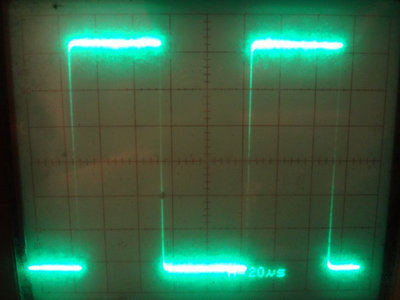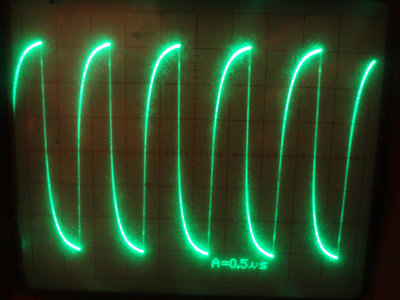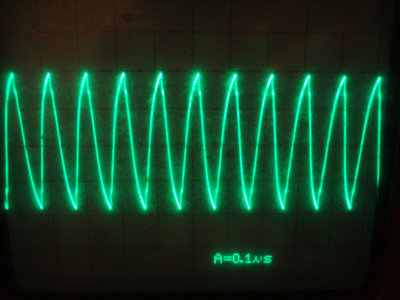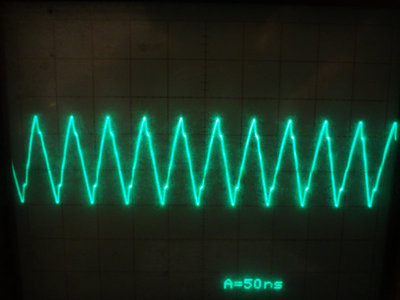The Si5351 breakout boards all work, at least according to the frequency counter, so I thought I'd put the oscilloscope on one to see what was coming out. I just connected the output of the Si5351 board straight to the oscilloscope using an SMA/BNC pigtail. I'm sure it's a totally incorrect way of doing it, but all I wanted to see was if I got a waveform and if it changed when I changed the Si5351 frequency.
I've been told that the Si5351 output is a square wave, and at kHz frequencies, that's what I get. This is the 10 kHz waveform. Nice looking square waves.
Going up a few orders of magnitude to 1MHz, the shape of the waveform loses its squareness, most likely due to the way I've connected things (impedance mismatch, improper loading and all that). But, as the time base shows, it's a much higher frequency signal.
At 10 MHz, there's even more distortion of the waveform, but definitely higher frequency.
Up at 20MHz, things are looking pretty triangular.
So, TIL:
- My Si5351 board really works! Yay!
- You can't just connect things willy-nilly to an oscilloscope and expect good results. (I already knew this, just wasn't important for this purpose.)
- There are still some things I need to learn about using this particular oscilloscope.




Thomas
Were you able to see any harmonics? I set my 5351 up as a CW beacon on 14.055MHz (or so) and hooked it to my dipole. I didn't get any spots in ten minutes, and took it down. I didn't have a LPF on the output, and didn't want to spam other bands inadvertantly.
Eugene Mah replied to comment from Thomas
The way I had things connected to the oscilloscope, I wasn't able to really see the harmonics. However, since the Si5351 output is a square wave, they'll be there unless you add in a LPF
Thomas
Yeah, I figured that I need a LPF. But if the wave is going from square to sawtooth, it shouldn't be as bad (though I forget the fourier transform for a sawtooth. I think it's decreasing power as you go out).
Eugene Mah replied to comment from Thomas
I wouldn't take the waveforms I was getting too seriously. It's going from a low-ish impedance into a high impedance oscilloscope input, so there's all kinds of mismatch and probably other funny stuff going on. One of these days if I get to it I'll see if I can do some proper sampling of the waveform.